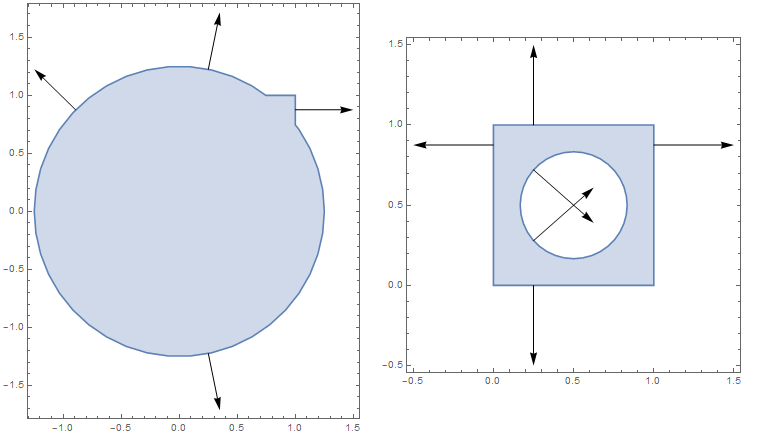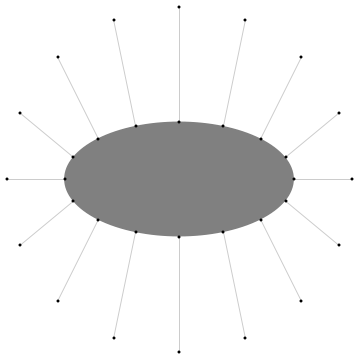Suppose we have a domain $\Omega$ such that RegionQ[\[Omega]] is True and RegionDimension[[\Omega]] == RegionEmbeddingDimension[\[Omega]] == 2 is True.
We also have a point $P$ such that RegionMember[RegionBoundary[\[Omega]], P] is True.
There is a way to find the direction of the outward normal to $\Omega$ in $P$?
I know how to mathematically obtain the outward normal if the region is described by a parametric boundary for example, but I don't know how to compute the outward normal for a generic Region.
The method should be reasonably efficient because I need to apply to many points lying on the boundary.



